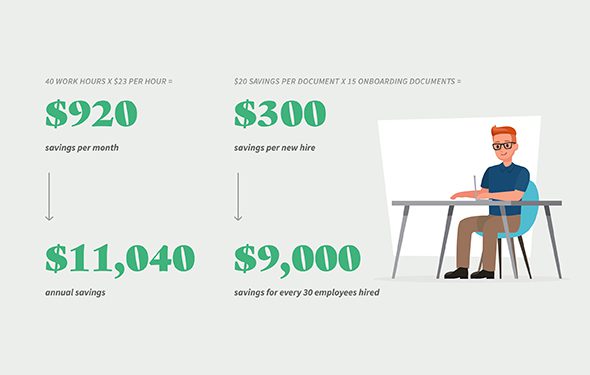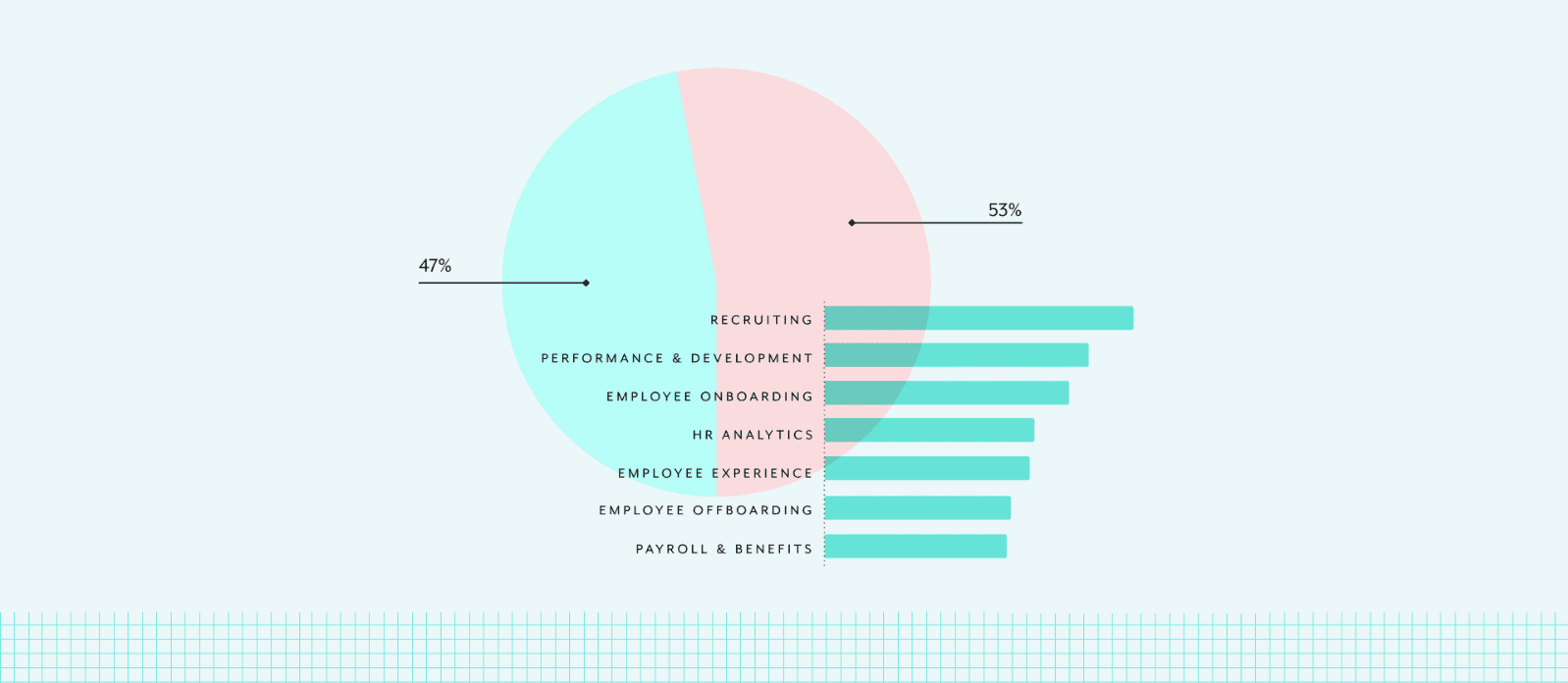It’s a rare business element that can’t benefit from the addition of some well-chosen software. The data-rich and procedure-heavy world of Human Resources is especially ripe for computerization, so let’s see how software can deliver real benefit to a beleaguered HR department.
HR Software: What Does it Do?
Any business of medium-size or above will generate a great deal of HR activity. Think about the entire journey of an employee from selection and recruitment to termination. HR will feature in some way during the overwhelming majority of that journey.
During that time, certain procedures must be followed. Holiday booking for instance can be a massive sap on an employee’s working day, so this, along with a host of other such tiresome endeavors can be automated via the wonders of HR software. Skills can also be learned and legal requirements met by introducing HR software across the organization.
By facilitating direct contact between the employee and the system, the many and varied benefits of HR software can be delivered to the workforce, with automation saving the HR staff’s time. A strong communication platform is also advised, and you may wish to consider these 8×8 alternatives.
Examples of types of HR software include workforce management (scheduling, time off management, etc), talent management (recruiting, onboarding, hard skills and soft skills training, etc), and human resource management systems (benefits administration, compliance, payroll, etc).
So, now we’ve got an idea of what HR software is, let’s take a tour through some of the benefits it can dish out.
Cost Saving
This is often the main reason why organizations start to think about automation. The knowledge that operations can be completed with significantly less outlay is a compelling reason to look into automating business processes.
By introducing a system that suits the size of your operation you can be sure that your small but growing business will have all the advantages of expensive HR professionals, without having the expense of having them on your staff. Once your staff are using self-service techniques, savings will start to stack up.

Alternatively, for those businesses that are already big enough to have an HR department in existence, you can give them the assistance they need as the business grows by introducing HR software that works alongside them, taking the more laborious elements of their work off their shoulders. Or you could consider a cloud pbx solution as a cost-effective and secure alternative to your current phone system.
It’s all a matter of smart software integration. By implementing software in such a way as to deliver exactly what’s needed, you can be sure that your business’ balance books will benefit hugely.
Administrative Trimming
Alongside cost cutting goes administrative streamlining. A great many of the tasks that a manual HR professional has to deal with will produce a striking quantity of paperwork, which has to be correctly completed, safely stored and accurately updated as time goes on. That all adds up to a lot of filing cabinets stuffed full of paperwork, that somebody has to be on top of.
HR software solutions have come up with the answer to all that. Cloud-based services in particular have an unbeatable solution to the piles of paperwork problem. It all goes into the cloud, which is where it can be stored securely at the same time as being instantly accessible to those who need to check the details of a contract, for instance. More of this below.
By automating a number of the processes that generate all this paperwork, an enormous amount of staff time is saved, meaning either that staff time is freed up for more creative tasks, or the company payroll benefits from reduced expenditure.
The advantages that HR automation delivers in terms of administrative streamlining are sometimes hard to quantify, but to take the world of sales as an analogy, imagine the amount of repetitive dialing saved by having an automated sales dialer. Think of the resulting greater staff productivity and morale and you have an idea of what automation can deliver, regardless of the business application.
Automated Accuracy
Manual form-filling is not just tedious, it can be very error-strewn. This is a great benefit of automation: the system won’t get tired or simply absent-minded. It can be left to complete the same forms all day long without error creeping in.
Moreover, when it’s time to complete an admin task to satisfy statutory requirements or to give an employee the means to get paid, you won’t have to remember to do this or ask somebody to do it. It will get done, automatically. The same with calculations of pay rates or holiday entitlements, as well as correct routing for approvals.
All this, removed from your workload, and reliably and thoroughly completed. Priceless. Especially when one considers the penalties for giving government bodies the wrong information. No wonder automation has been adopted across the HR sphere.

Automation is great for less critical reminders too. Say you’re trying to introduce a new culture of standup meetings in your office. Nothing’s more dispiriting than having to keep reminding people to turn up. HR software can take this on for you. It will send out invitations, reminders, and follow-ups as necessary.
In this way, HR software can help with introducing improvements to practices, whether it’s just getting people to remember to submit their expenses on time or seeking to improve certain aspects of the office environment. Through prompts and reminders, HR software can assist in improving workplace culture.
Store Centrally
As has been mentioned, cloud-based services offer the unbeatable feature of centralized storage. Why is this so good? When one considers the sheer number of stakeholders, then factor in not just their office locations but also their home office locations, you have a big mess of access requirements.
By keeping all the data in the cloud, this information is kept instantly accessible no matter where the employee is, which is especially important in this era of hybrid and remote working.
Custom Build
As with most business applications, HR needs will vary from organization to organization. To adequately deal with these individual needs, it’s important that the software used is adaptable.
Some software needs are consistent throughout an organization. For example, everyone in an organization who uses a computer for work will need Windows 10 or a Mac equivalent.
But it’s important to recognize that different needs also occur not just between organizations but within them too. One department may require total personnel file access, for instance, while another may need anonymized scheduling data for analytical purposes.
Consequently, HR software allows for customization of interface design so that only the most relevant elements of the system are immediately visible to the user. To have other elements on there would just contribute to the noise. It’s like when you have products you’re trying to sell on Shopify. You want to see those products emphasized. To have others in the way is counter-productive.
Of course, it’s not just about the interface’s appearance. There should also be customizability of routines and procedures contained within the system to suit the specific needs of the organization. If your HR system doesn’t feature this kind of adaptability, you may need to consider a different HR system.
The benefits of this customization reside in clarifying the HCI (human computer interaction), cutting the time taken to find the relevant part of the system, and reducing error by making the operation as simple as possible. The more a system is modeled around its environment, the more useful that system is.
Upgradability
This is a benefit that only applies to cloud-based software. One of the major benefits of using a cloud-based or Software as a Service (SaaS) solution is that you only pay for the system features that you need. In other words, you select a level of service that suits your business needs as they are when you install the software.
But here’s the kicker: as your business grows, you simply add on the features you need, all the while only paying for what you require. Upgrading takes place with minimal delay, so you don’t need to be a wiz with predicting demand, forecasting inventory, or any other borderline psychic abilities.
Compare that with buying a whole system, discovering you don’t need half of it, then finding that as your business grows you need to invest in a whole new system to accommodate your burgeoning needs.
Safety
The advantages to your security in having staff files encrypted and protected from unauthorized access, rather than just in a (sometimes) locked filing cabinet in a busy office are innumerable. And with data breaches currently costing a culpable business, on average, $4.24 million, you can’t afford to mess about with this.
As well as this, HR software, especially cloud-based HR software, allows for better data recovery. Certainly much better than if you have everything handwritten on paper forms. Also better than a series of spreadsheets you’ve adapted to your HR needs on an ad hoc basis.
It might be the case that your data is stolen by a hostile party. Or it could be a good old-fashioned fire or flood that does for your precious data. If you’ve got it stored securely, remotely, and in multiple locations, you’ll be in a much better position to bounce back from such a calamity. This is where cloud-based HR software will come swinging to your rescue.
This is especially so when combined with the recoverability benefits of using automation.
You may have the best testing regime, incorporating full regression testing KPI, in your organization, but nothing beats the sense of security given by the knowledge that you have gold-standard recoverability. Bring that hazard on. Not really. There’s confidence, and then there’s hubris.
Conclusion
So, there are a host of advantages to working with HR software. In truth, we’ve only just scratched the surface here.
One of the major pluses of using HR software is that the benefits it delivers will impact the lives of everyone in the organization. From the fresh onboarder to the seasoned outgoer, all in the business will have their working lives enhanced by the efficiencies brought about by HR software. It’s an across-the-board winner. And there are precious few of those in business.
Bio: Grace Lau – Director of Growth Content, Dialpad
Grace Lau is the Director of Growth Content at Dialpad, an AI-powered enterprise communications solution for better and easier team collaboration. She has over 10 years of experience in content writing and strategy. Currently, she is responsible for leading branded and editorial content strategies, partnering with SEO and Ops teams to build and nurture content. Grace has also written for other domains such as Guru and ZenTao. Here is her LinkedIn.


